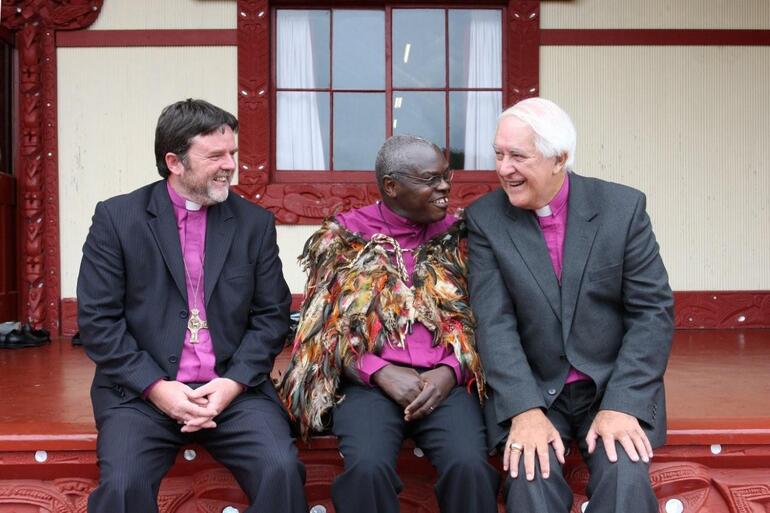
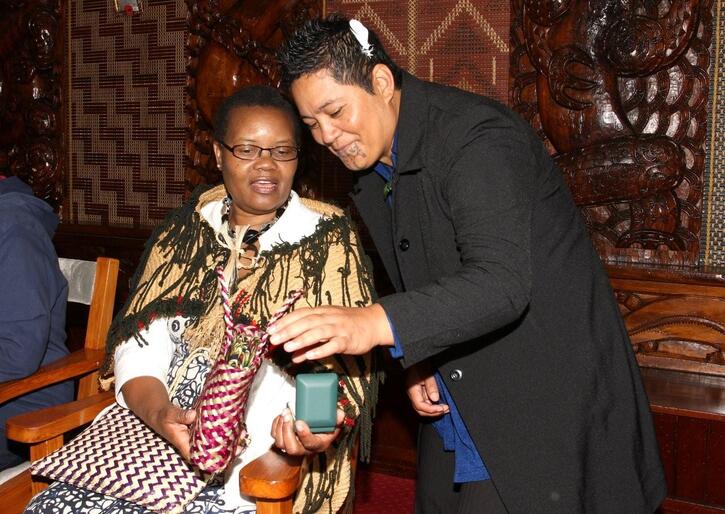
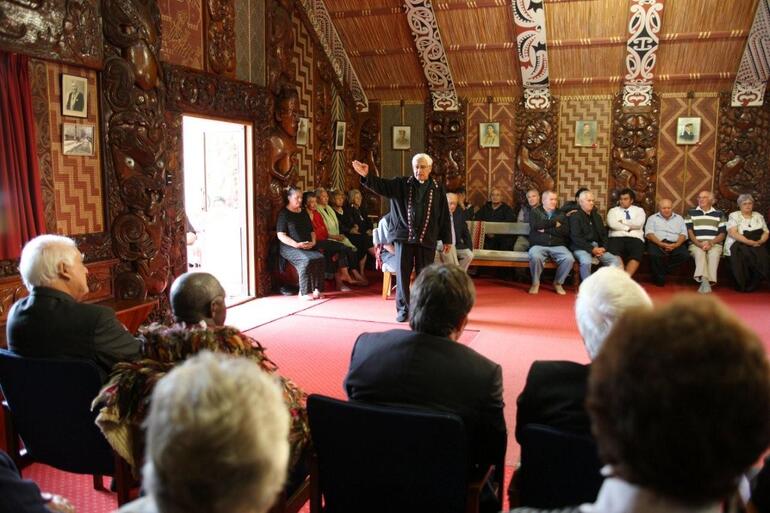
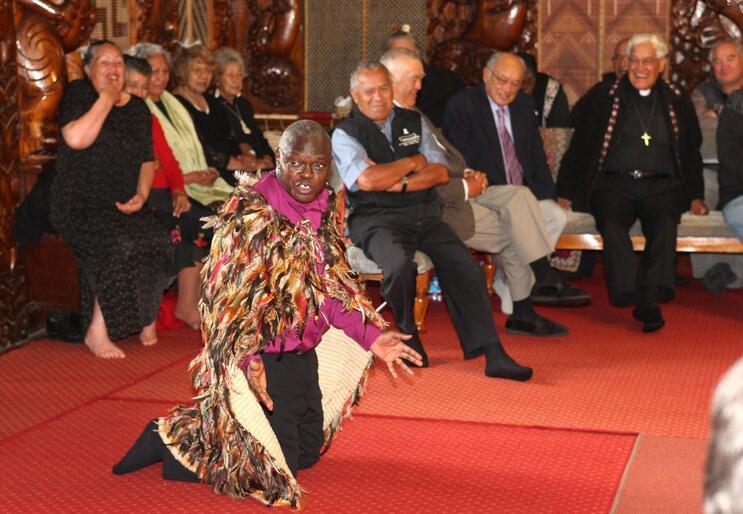
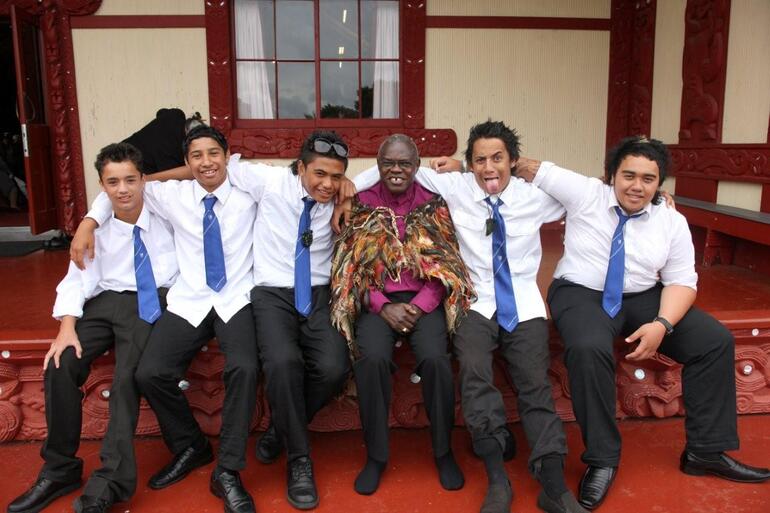
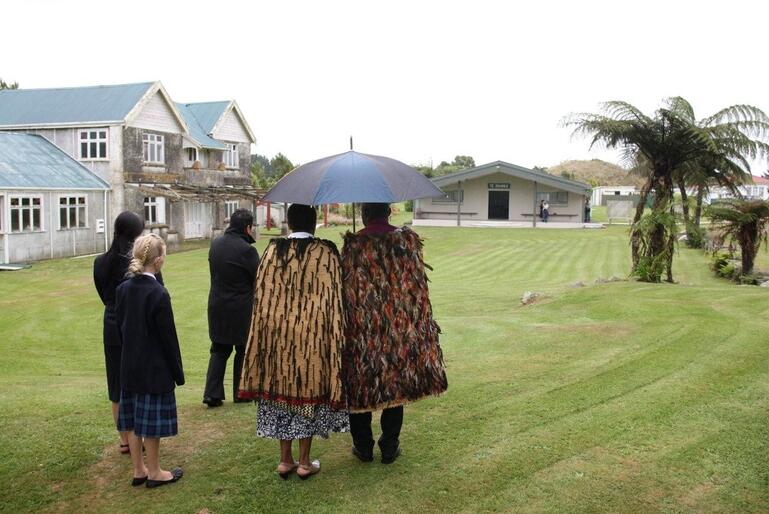
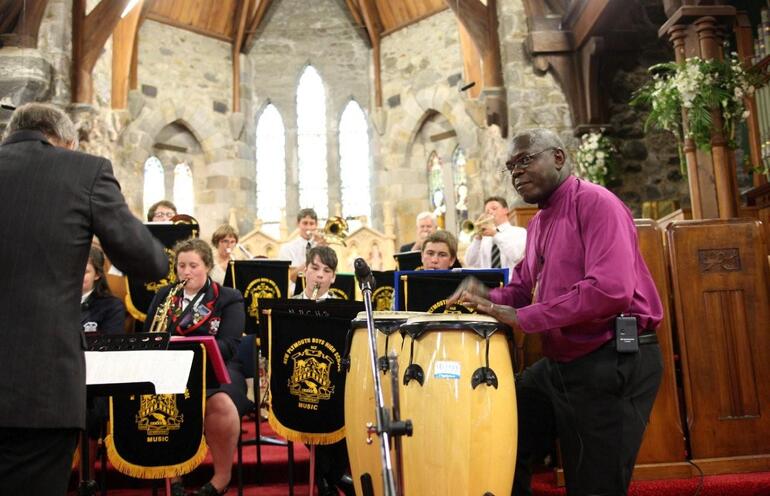
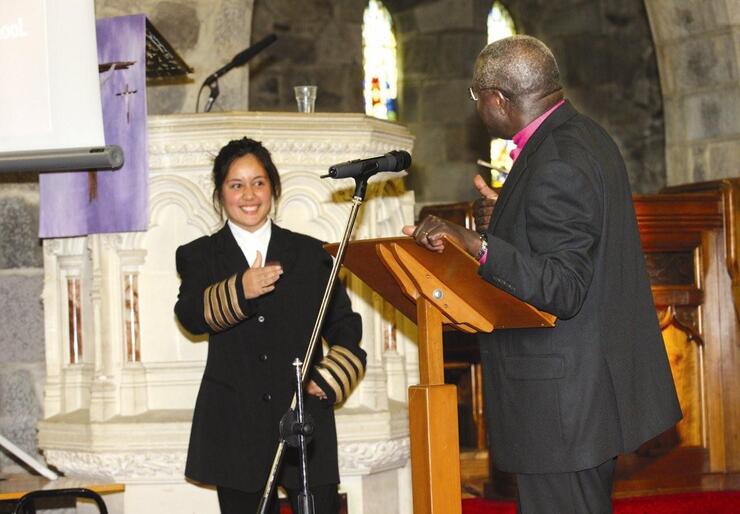
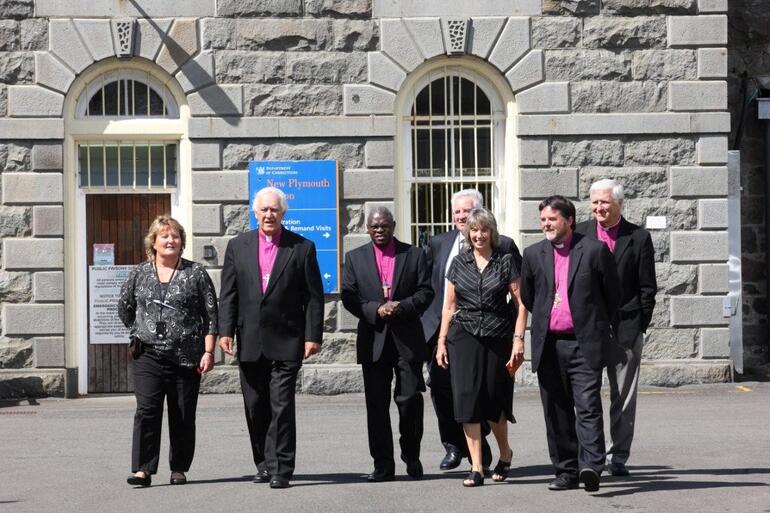
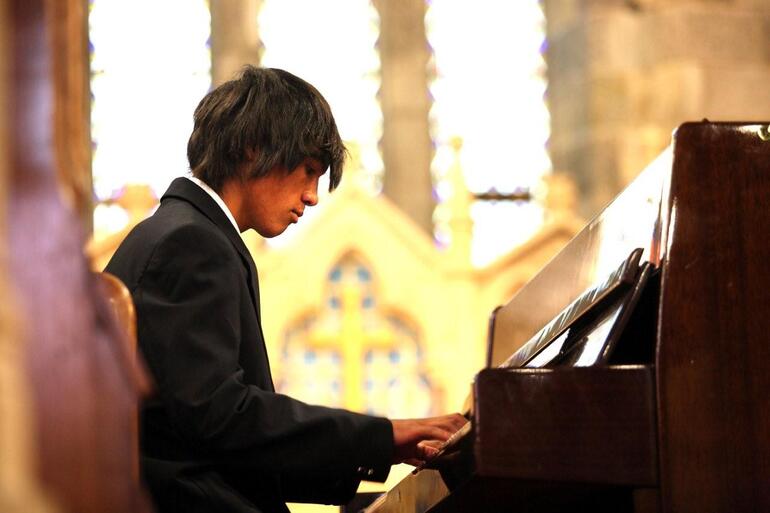
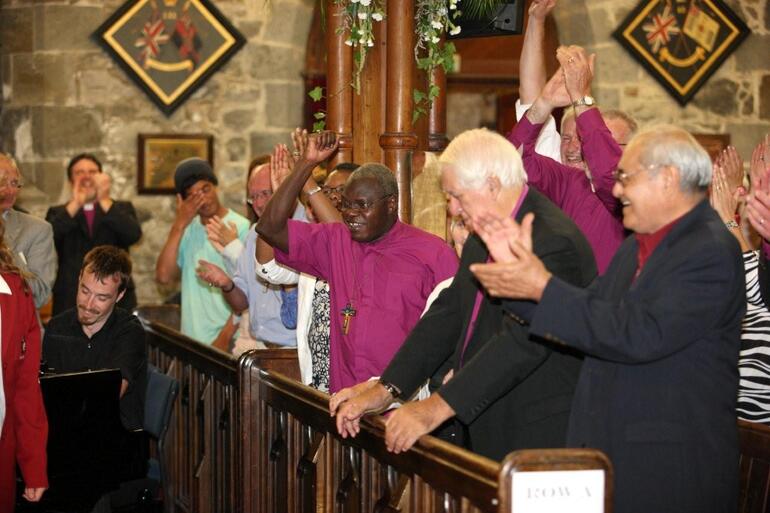
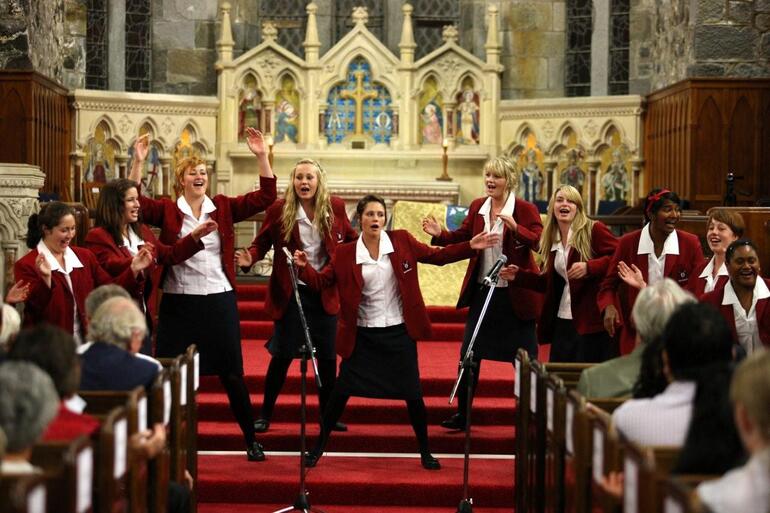
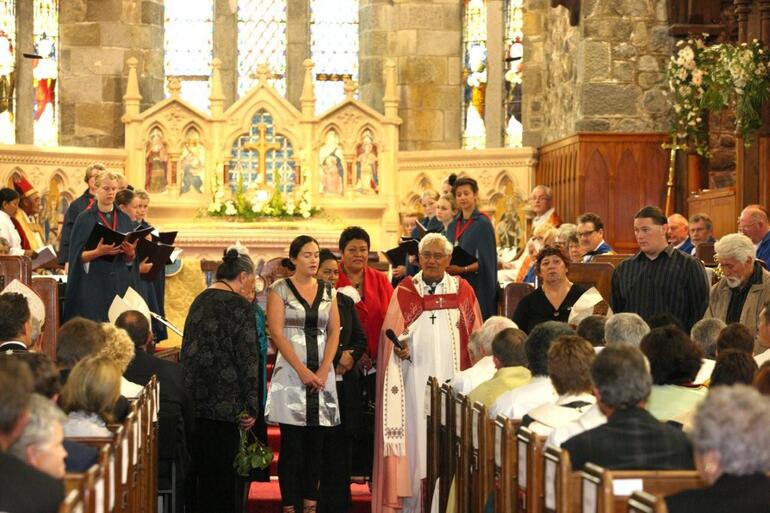
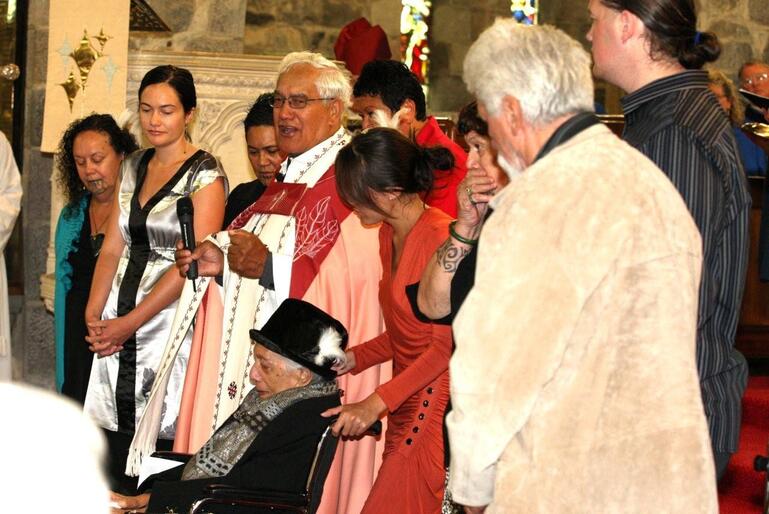
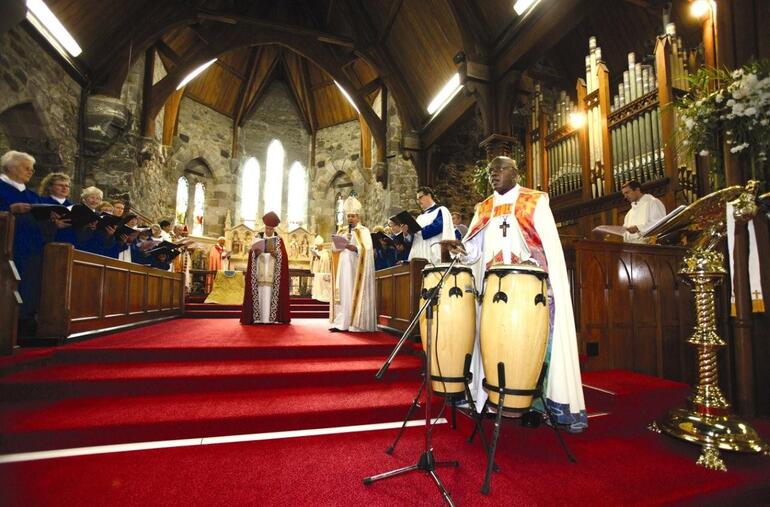
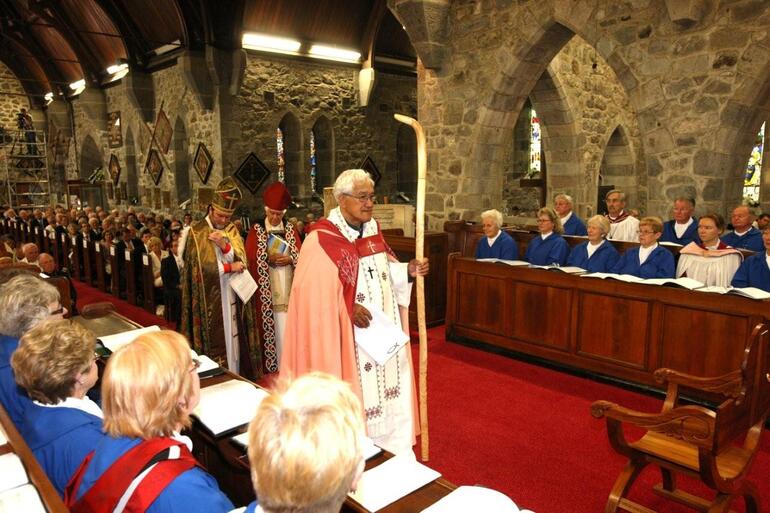
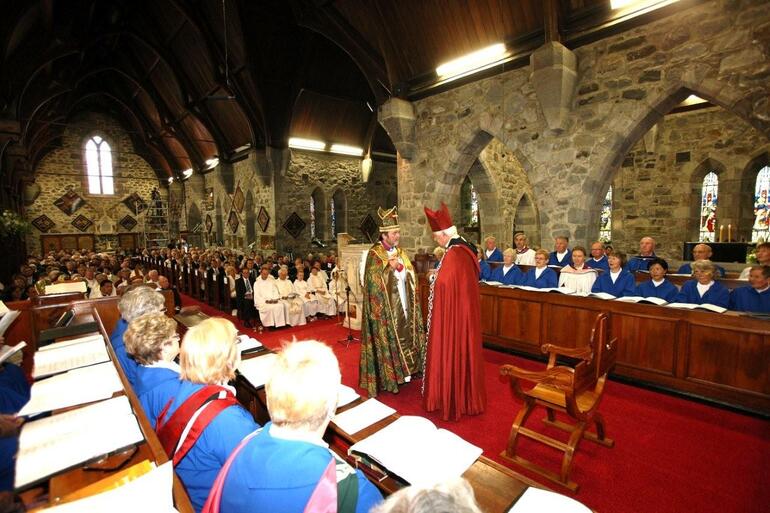
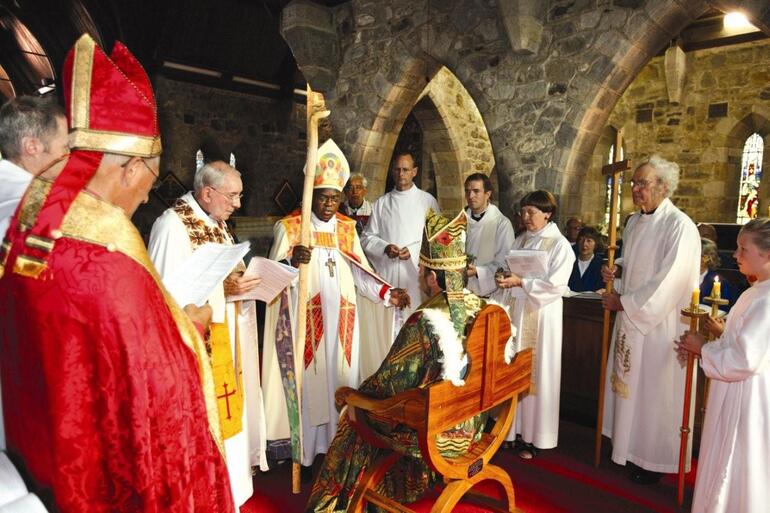
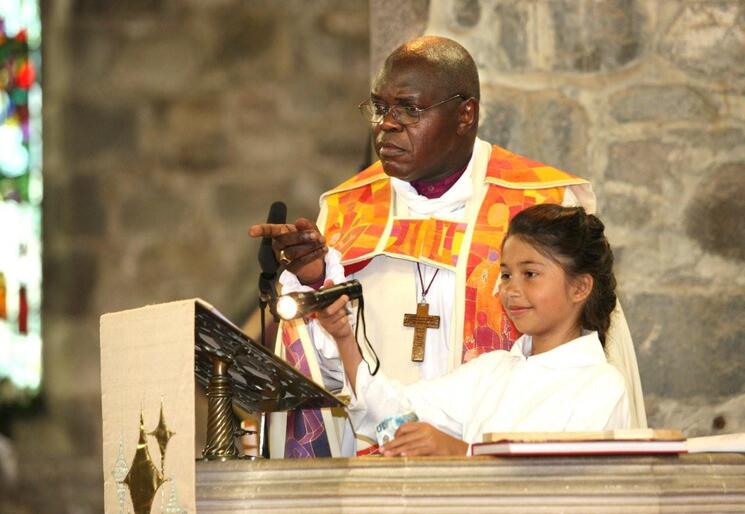
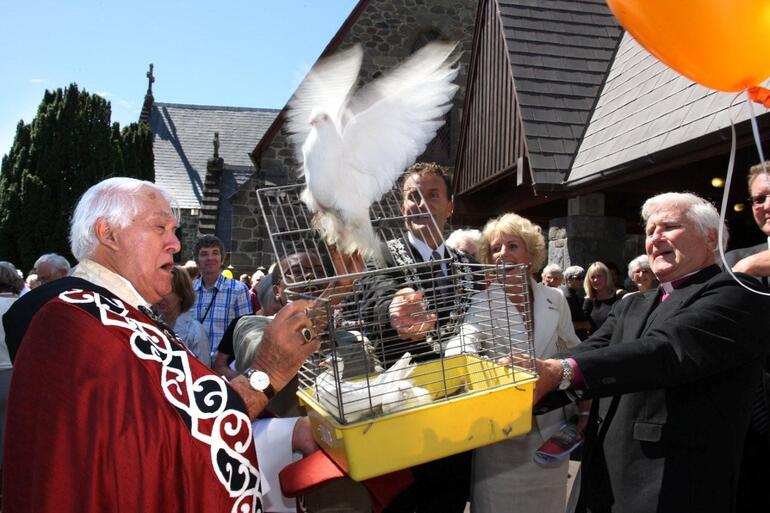
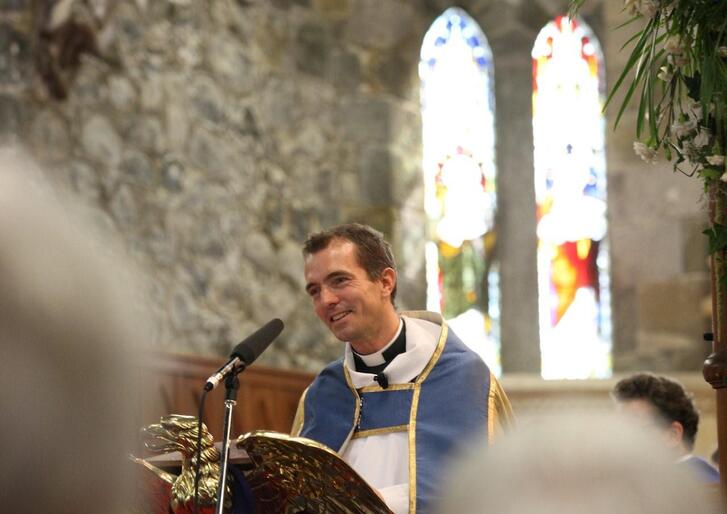
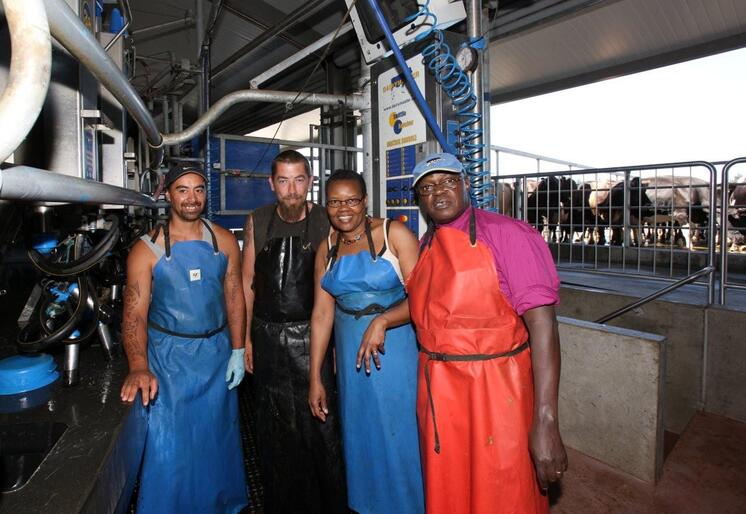
When St Mary’s New Plymouth was consecrated as a full-fledged cathedral on Saturday – it’s the first new Anglican Cathedral in New Zealand in more than 80 years – Bishop Philip Richardson spoke of his hopes for a new beginning.
St Mary’s, he prayed, would now become a cathedral for all the people of Taranaki; a place where all could gather to celebrate and lament.
A conventional enough sentiment, you might think, for such an occasion.
But when, in front of 900 assembled witnesses, Bishop Philip installed Archdeacon Tikituterangi Raumati as Cathedral Kaumatua – and told him that he was “deeply sorry, both personally but also as the Bishop of Taranaki” for the “alienation and breach of trust” that had happened when the Anglican Church took the settlers’ side during the Taranaki land wars… well, you knew something profound was happening, and that all really meant all.
In one way, of course, St Mary’s is anything but new. The earliest parts of that beautiful stone church are, in fact, 150 years old, and St Mary’s has long been an icon of New Plymouth.
In 1842 Bishop Selwyn had acquired the land on which St Mary’s stands, and he'd spoken of his dream that one day a diocese would arise and a cathedral would be built there.
But there’s painful history locked within those old stone walls.
Because during the Taranaki wars of the 1860s St Mary’s became a garrison church, the church for the settlers and the army. To this day, 19th century British army hatchments (diamond-shaped plaques bearing regimental coats of arms) line the walls of the nave.
Maori in Taranaki have never forgotten that – and to this day, they’ve stayed away from St Mary’s in droves.
Tiki Raumati (Ngati Mutunga, Te Atiawa) is 73 years old: and not only was he the first Maori priest to be ordained at St Mary’s, he’s the only Maori priest to have been ordained there.
In 1965, on the day when he was ordained a deacon, his mother came to the church.
She made her karanga that day, paying her tribute to all the faithful departed, and telling Tiki that she would always support him.
“But never forget,” she told him and those who had ears to hear her cry: “This is the place where they stored the gunpowder they used to shoot your ancestors.”
Bishop Philip told Saturday’s congregation that the cathedra, the new bishop’s chair installed and consecrated on Saturday, is a sign of one of his chief responsibilities: as bishop, he is to sit and teach the faith.
But his first duty as teacher in his new cathedral was to acknowledge Archdeacon Tikituterangi, the man who had taught him “with great patience… so much over the last 10 years.”
He told Archdeacon Tiki that he was like “a tree with deep roots, strong and secure in the place you stand, the soil you are rooted in. But with branches so wide they encompass the whole horizon – you have such a wide, generous and big-hearted vision.
“One very important lesson you have taught me is that we cannot find the future, the kind of future you speak of and your tupuna spoke of if you do not face the past honestly and with real understanding.
“In this community, in this church we need to do this. In a few days we commemorate the beginning of a conflict that gave birth to the great movement centered on Parihaka.
“This Church stood, perhaps inevitably, on one side of that conflict. This has been a source of deep alienation for many of your people, and you recall clearly your mother’s words in this very church.
“For that alienation and for that breach of trust I am deeply sorry, both personally but also as Bishop of Taranaki.
“The commitment I make today on behalf of myself and my successors is that the people of this Church, together with the Dean and myself, will honestly face the past, so that with true and honest understanding we may build a new future. We will deal with the signs and symbols of one part of the story.
“As Cathedral Kaumatua we are not asking you to do the work for us, but by your grace and generosity of vision allow us to do this work in your presence… so that in the future this Cathedral may be a place for all, and a place where Tangata Whenua may have an appropriate role in the governance and oversight of this Church.
“My dream is that this may truly be a Cathedral for all the people of Taranaki without impediment, a place of peace and reconciliation based on justice and understanding.”
That theme of unity and reconciliation was everywhere during the cathedral’s consecration. For example, Bishop Philip wore a new cope and mitre during the service.
It has an image of Taranaki maunga embroidered on its back, and is trimmed with the white feathers that the descendents of Te Whiti o Rongomai, the prophet of Parihaka, wear as a sign of their commitment to his ideals of peace with honour.
That ‘new’ cope had, in fact, been Tiki’s own. He’d given it to Bishop Philip, with a matching mitre. Tiki also presented him with a magnificent wooden crozier, carved by Moewai Aterei.
There was the moment, too, when Bishop Philip escorted another of Taranaki’s favourite sons, Bishop Sir Paul Reeves, himself a descendant of Te Whiti, to sit in his cathedra.
Then there were the Melanesian Brothers, who sang during the distribution of the Eucharist. In 2003, seven members of the Brotherhood were tortured and killed in the Solomon Islands – and the Brotherhood has now become the largest Anglican order in the world.
And the preacher of the consecration day sermon, the Archbishop of York, Dr John Sentamu – who, for the week he had been in New Plymouth, had been a fixture on the front pages of the Taranaki Daily News, the region’s daily newspaper – further developed the theme that he had spoken about all week: that in Christ there is reconciliation and total forgiveness, and God’s mission is “to put love where love isn’t”.
Taking as his theme the epistle of the day, 1 Peter 2, Dr Sentamu told the people of St Mary’s, they were living stones, and they must be built into “a spiritual house vibrant with life.”
“The unity of this spiritual building is vitally important… If we are divided,” he warned, “we can’t join in Christ’s work of making all people God’s friends.”
Dr Sentamu – who is a fellow of the Cambridge college named for Bishop Selwyn – said the consecration of the cathedral was the fulfilment of the dream Bishop Selwyn had had 160 years ago.
“My friends,” he told the congregation, “today we have liftoff.”

















Comments
Bosco Peters
Friday 12 March 2010 2:36:02 pm
Log in or create a user account to comment.